A constant force F directed vertically upwards is applied to the pulley shown in Fig. What are the acceleration produced in the masses m1 and m2 when F is equal to
40N ? Given m1=2.5kg,m2=1.5kg and are initially at rest on the horizontal surface. Assume that the strings are mass less and the pulley is firctionless.
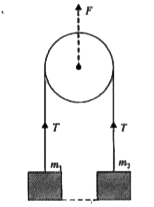
m1g=24.5N,m2g=14.7N
F=40N,40−2T=0
T=20N,T<m1g. So m1 will not be lifted up. So a1=0.
T>m2g. So m2 will be lifted up. a2=T−m2g/m2=20−14.7/1.5=3.53ms−2.
Topper's Solved these Questions
- DYNAMICSBOOK - ICSECHAPTER - DYNAMICSEXERCISE - SHORT ANSWER QUESTIONS WITH ANSWERES
43 Videos
- DYNAMICSBOOK - ICSECHAPTER - DYNAMICSEXERCISE - SHORT ANSWER QUESTIONS WITH ANSWERS
12 Videos
- DYNAMICSBOOK - ICSECHAPTER - DYNAMICSEXERCISE - VERY SHORT ANSWER QUESTIONS
60 Videos
- DIMENSIONSBOOK - ICSECHAPTER - DIMENSIONSEXERCISE - SELECTED PROBLEMS (FROM CONVERSIONS OF ONE SYSTEMS OF UNITS INTO ANOTHER)
9 Videos
- FRICTIONBOOK - ICSECHAPTER - FRICTIONEXERCISE - Selected problems
30 Videos
Similar Questions
In fig. both pulleys and the string are massless and all the surfaces are frictionless.
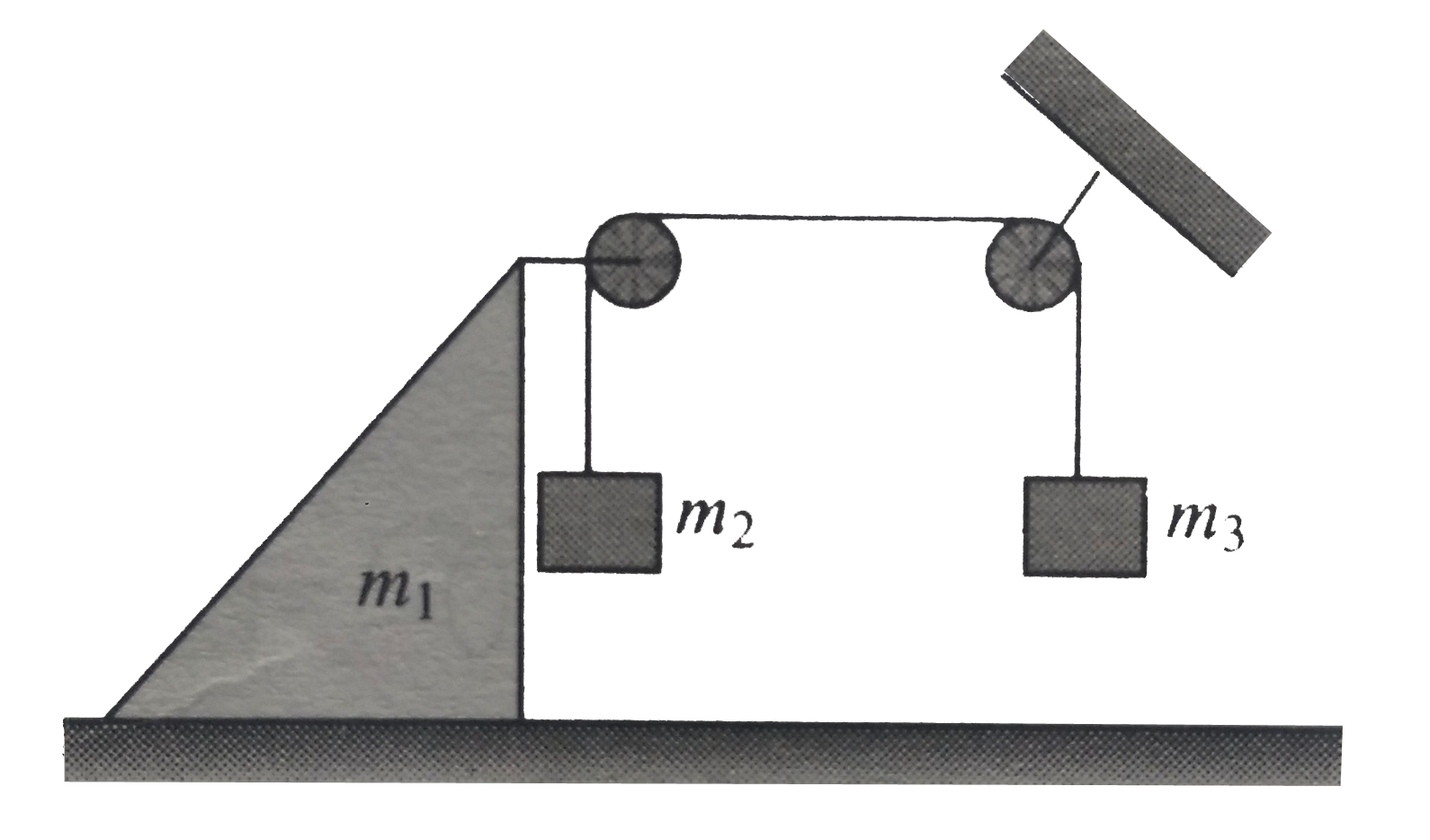
Given m1=1kg,m2=2kg,m3=3kg.
Find the tension in the string
View SolutionA constant force F=m2g/2 is applied on the block of mass m1 as shown in fig. The string and the pulley are light and the surface of the table is smooth. The acceleration of m1 is :
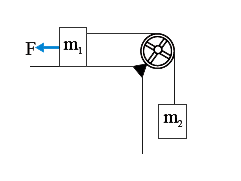
View Solution
Knowledge Check
In fig. both pulleys and the string are massless and all the surfaces are frictionless.

Given m1=1kg,m2=2kg,m3=3kg.
Find the tension in the stringA1207NB2407NC1307NDNone of theseIn the figure shown m1=1kg,m2=2kg, pulley is ideal. At t=0, both masses touches the ground and string is taut. A force F=2t is applied to pulley (t is in second) then (g=10m/s2) :
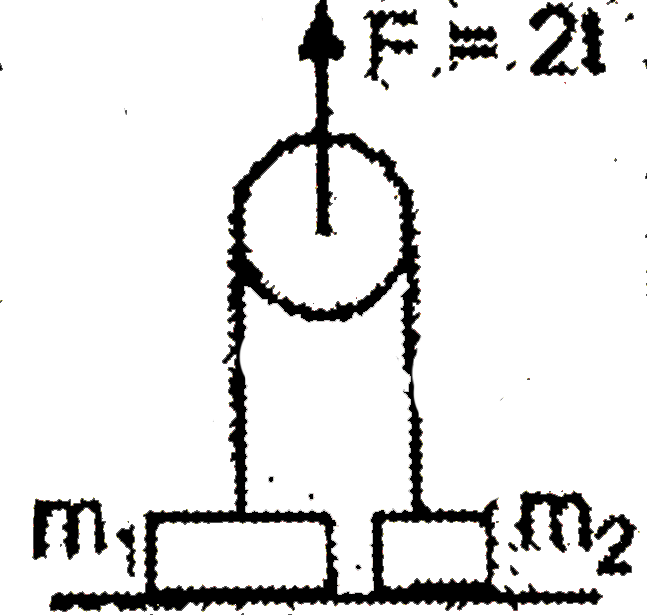 Am2 is lifted off the ground at t=20 secBacceleration of pulley when m2 is about to lift off is 5m/s2Cm1 is lifted off the ground at t=0 secDboth blocks are lifted off simultaneously
Am2 is lifted off the ground at t=20 secBacceleration of pulley when m2 is about to lift off is 5m/s2Cm1 is lifted off the ground at t=0 secDboth blocks are lifted off simultaneouslyTwo masses m1 and m2 are attached to a string which passes over a frictionless smooth pulley. When m1=10kg,m2=6kg, the acceleration of masses is
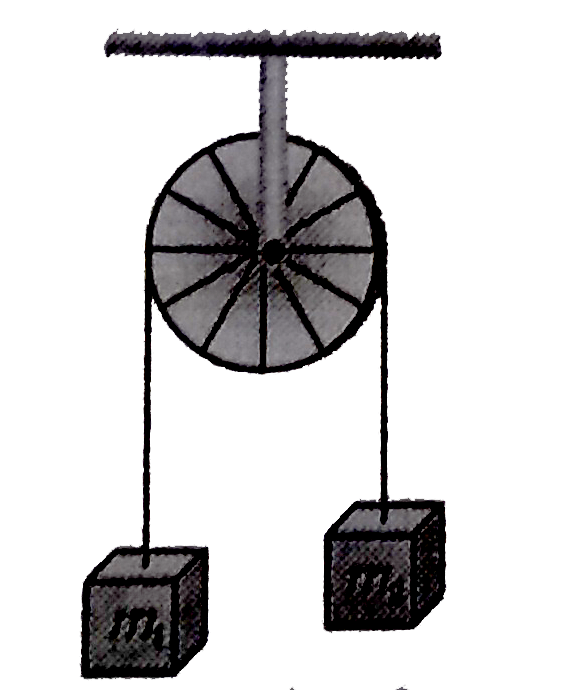 A20m/s2B5m/s2C2.5m/s2D10m/s2
A20m/s2B5m/s2C2.5m/s2D10m/s2
A constant force F=m2g/2 is applied on the block of mass m1 as shown in fig. The string and the pulley are light and the surface of the table is smooth. The acceleration of m1 is :

View SolutionA constant force F=m_2g/sisappliedontheblockofmassm_1asshown∈figure.Thestr∈gandthep≤––––yarelightandthesurfaceofthetab≤issm∞th.F∈dtheae≤rationofm_1
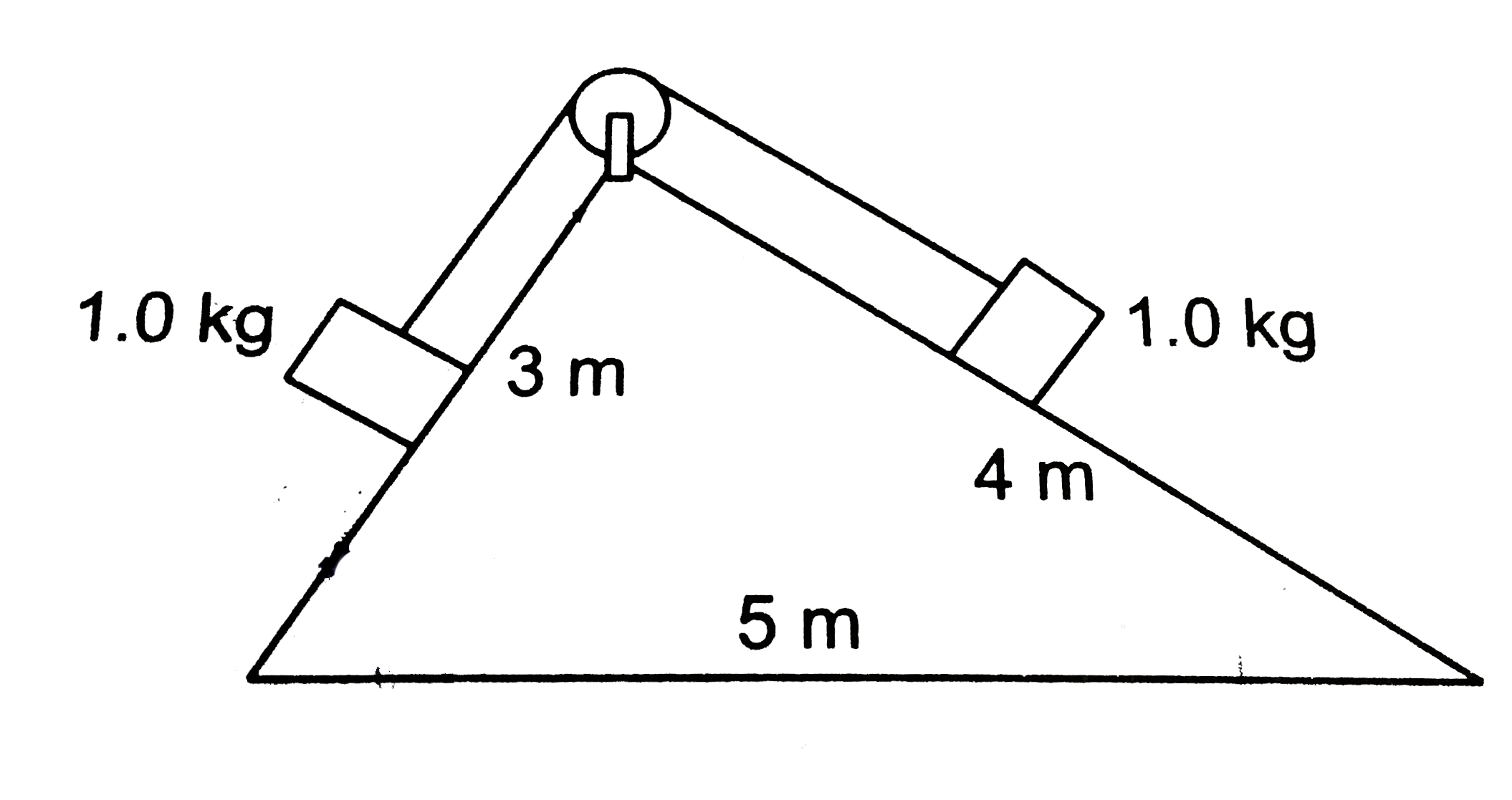
View SolutionFind the acceleration of masses m1 and m2 connected by an inextensible string, shown in figure-2.13(a). The string and pulley are assumed to be massless and frictionless.
View SolutionA constant force F=20N acts on a block of mass 2kg which is connected to two blocks of masses m1=1.0kg and m2=2kg as shown in Calculate the accelerations produced in ball the three blocks Assume pulleys are frictionless and weightless
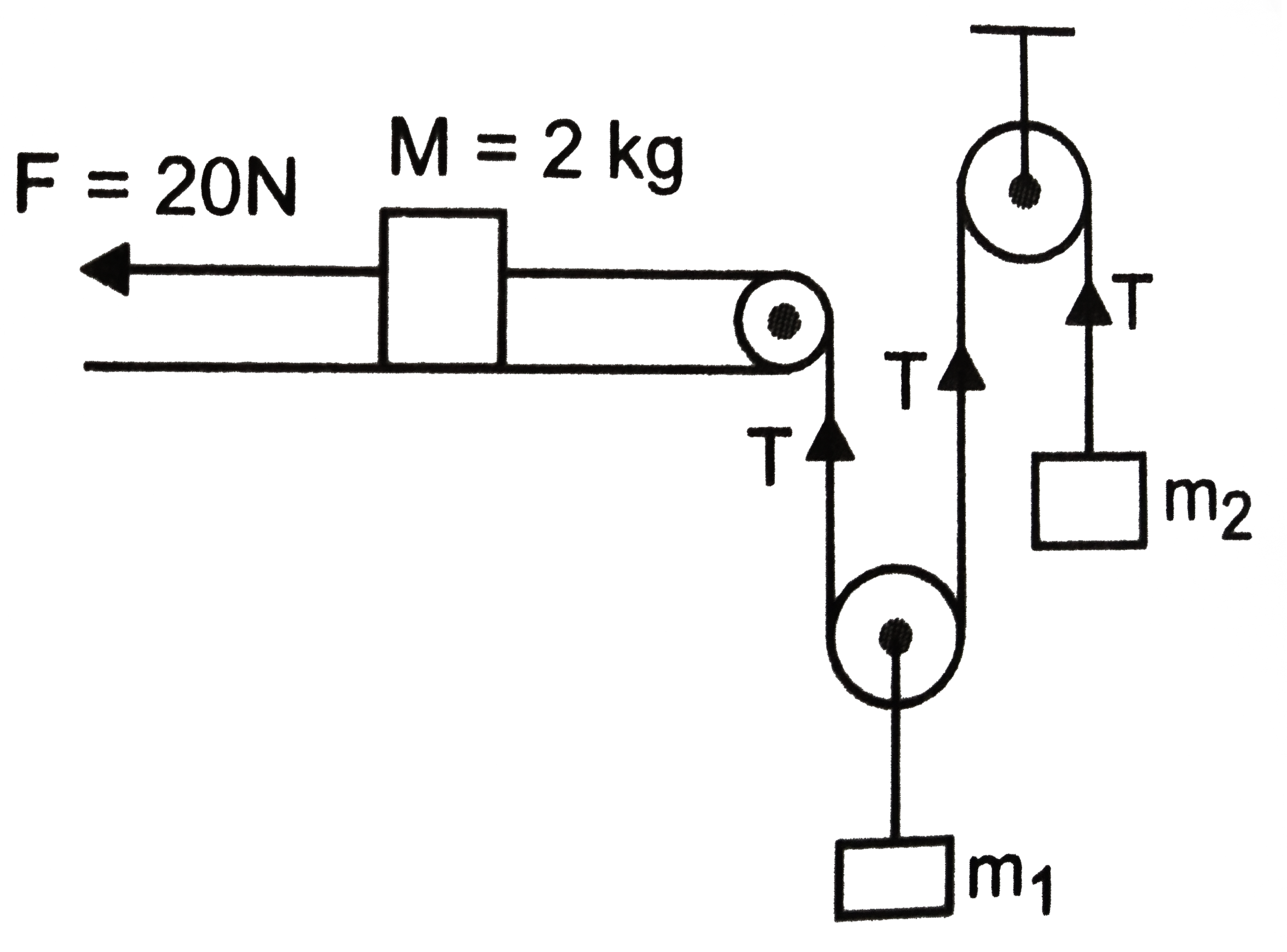 .
.
View SolutionTwo masses m1=5kg and m2=4.8kg tied to a string are hanging over a light frictionless pulley. What is the acceleration of the masses when left free to move?
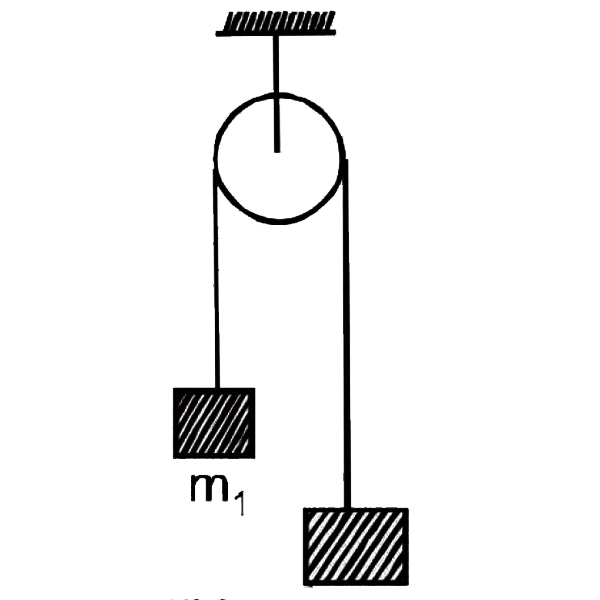
View Solution
